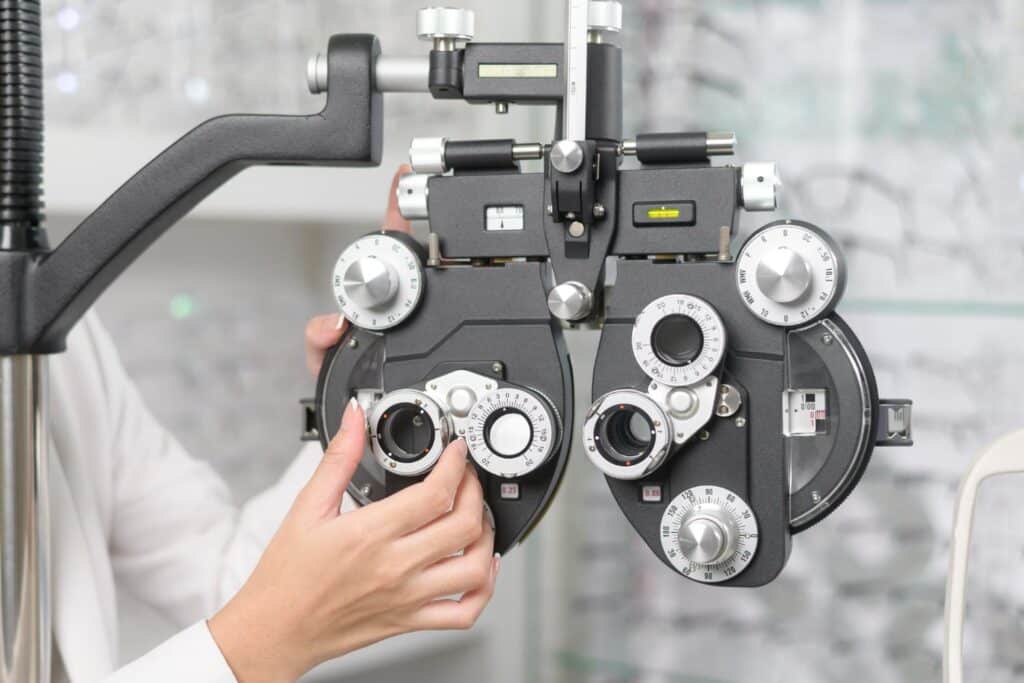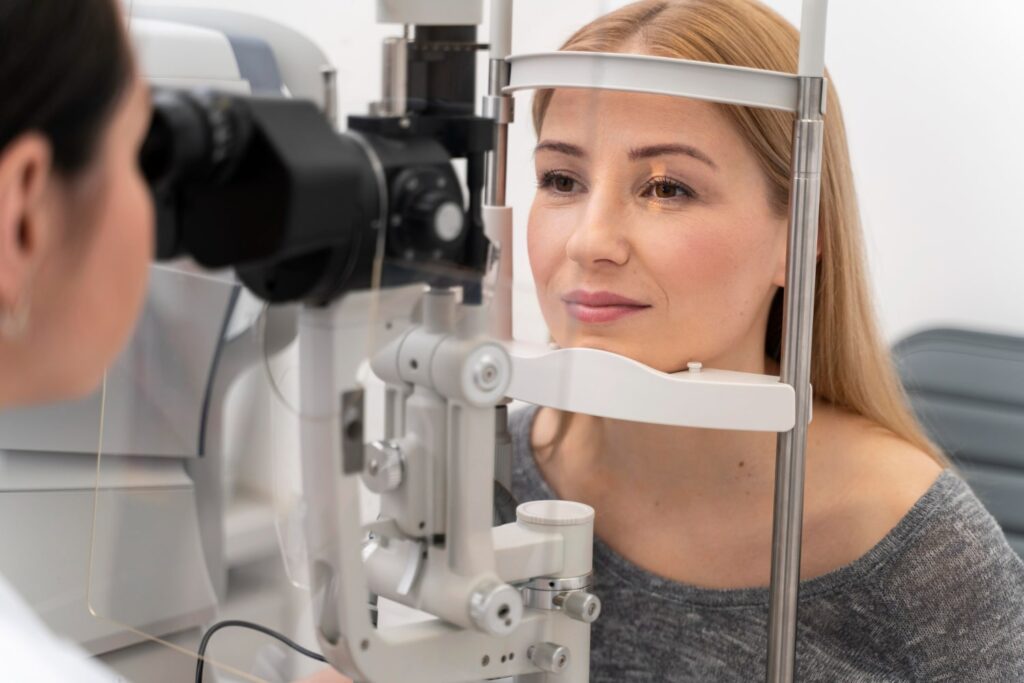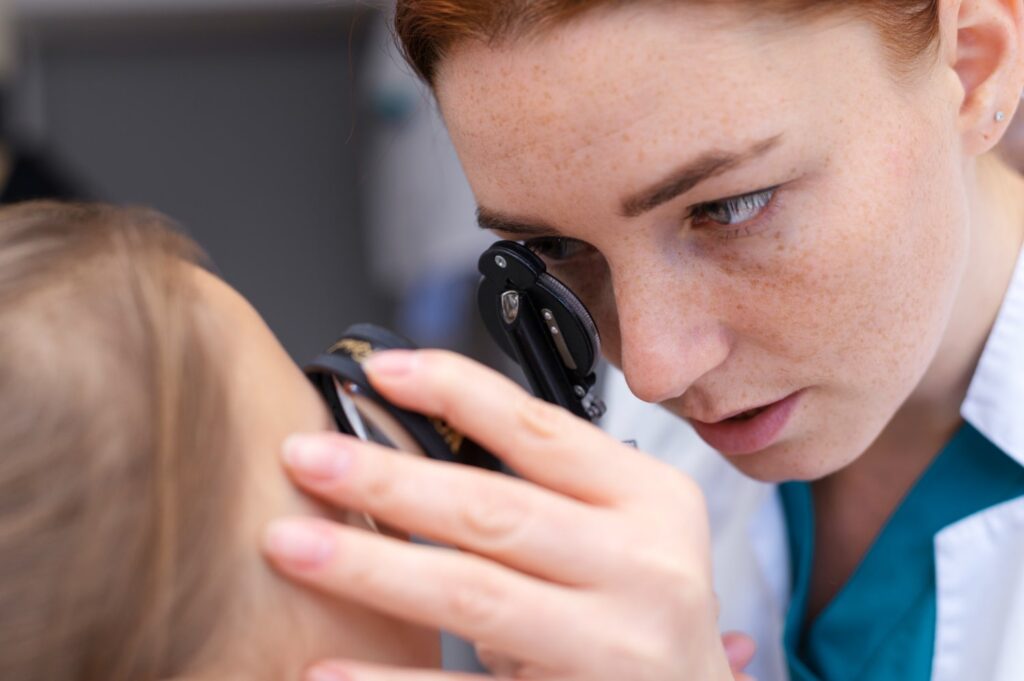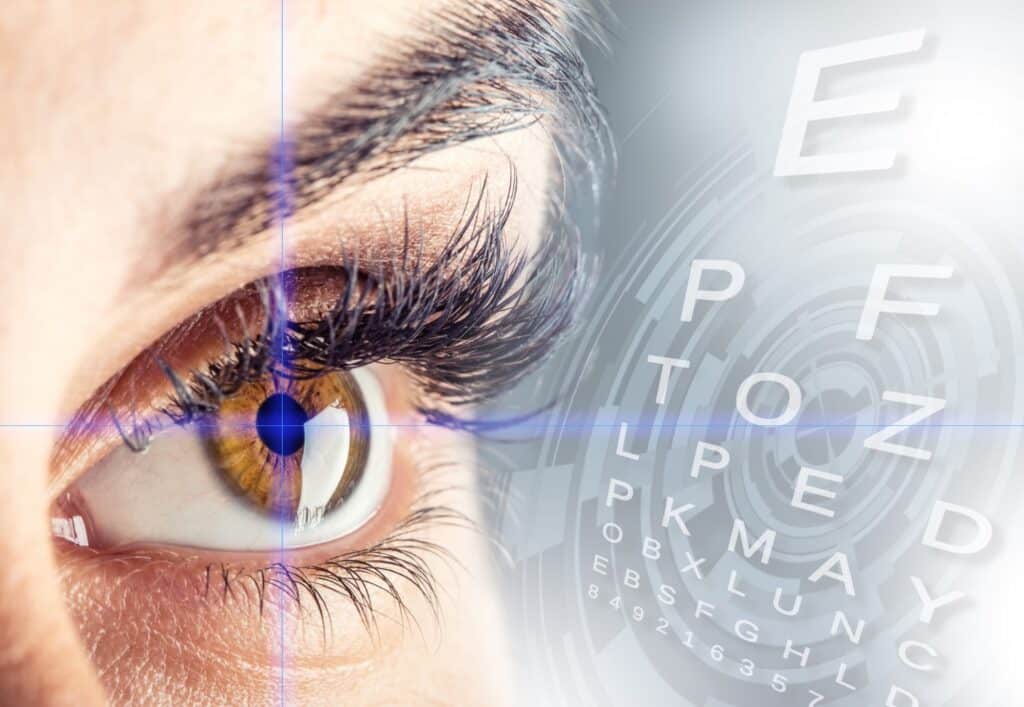Exosome Eye Therapy: Revolutionizing Ophthalmology Treatment

Introduction
Exosome Eye Therapy: A New Dawn in Ophthalmology
Introducing exosome eye therapy, the body’s natural solution for intercellular communication, offering a novel approach to treating degenerative eye conditions. This innovative approach, leveraging the power of exosomes, is poised to redefine our understanding and treatment of ocular conditions. As we delve into the transformative potential of exosome eye therapy, we uncover the promise it holds for a future of enhanced vision preservation and restoration.
Imagine standing at the edge of a revolution, where the fear of losing your sight to the relentless march of time or the sudden ambush of disease is no longer an inevitable descent into darkness. In the intricate tapestry of medical innovation, a new thread is being woven into the field of ophthalmology. Promising to redefine our approach to preserving and restoring vision. This thread is the science of exosomes. Microscopic beacons of hope for degenerative eye conditions that have long eluded the grasp of conventional treatments. As we embark on this enlightening journey through the microscopic world of exosomes, prepare to discover how these tiny vesicles could herald a new era of clarity. And vision preservation, offering a clearer tomorrow for those peering into the uncertainty of degenerative eye diseases.

The Ocular Battleground: How Exosome Eye Therapy is Making a Difference
In the vast expanse of medical battlegrounds, few are as personal and as profoundly impactful as the fight to maintain our vision. Degenerative eye conditions such as age-related macular degeneration (AMD) and glaucoma stealthily rob millions of their most cherished sense. Often with little warning and few symptoms until the damage is significant.
The Prevalence of Degenerative Eye Conditions
AMD stands as a leading cause of vision loss. Affecting the macula, the central region of the retina responsible for sharp, straight-ahead vision. Glaucoma, known as the “silent thief of sight,” gradually impairs peripheral vision. And also can lead to blindness if left unchecked. These conditions are not just diseases of the eye. They are diseases of life, reshaping every aspect of an individual’s world.
Introducing Exosomes: The Body’s Natural Messengers
Enter exosomes, the body’s natural communicators, measuring a mere 30 to 150 nanometers in diameter. Once thought to be mere cellular debris, exosomes are now recognized as vital players in intercellular communication. Carrying a cargo rich in proteins, lipids, and nucleic acids. In the realm of ophthalmology, these vesicles offer a novel approach to treatment. One that could potentially turn the tide in the battle against these relentless conditions.
In the next sections, we will delve deeper into the essence of exosomes, their role in ocular health. Understanding exosome eye therapy delves into its role in ocular health, highlighting groundbreaking research that paves the way for innovative treatments.

Exosome Eye Therapy: Unlocking the Potential for Ocular Health
As we delve into the microscopic world of exosomes, it’s like uncovering a secret society within our own bodies. One that holds the keys to healing and regeneration. These tiny vesicles, once dismissed as cellular waste, are now at the forefront of a medical revolution. Particularly in the realm of eye health.
The Biological Functions of Exosomes in Eye Therapy
Exosomes are more than just cellular couriers. They are the embodiment of communication and collaboration at a cellular level. They carry messages in the form of proteins, lipids, and genetic material from their cells of origin to distant cellular landscapes, influencing processes from tissue repair to immune responses. In the eye, these messages can mean the difference between a retinal cell succumbing to damage or finding its path to recovery.
Exosome Eye Therapy: Modulating Inflammation and Promoting Healing
Inflammation is the body’s natural response to injury. But when uncontrolled, it can lead to chronic disease and further tissue damage. Exosomes have the unique ability to modulate this inflammatory response. Potentially halting the cycle of damage in conditions like uveitis, diabetic retinopathy, and even AMD. Their cargo of anti-inflammatory agents can soothe the inflamed ocular environment, offering a respite to besieged cells and tissues.
Exosomes as Vectors of Regeneration
The eye is a complex organ, with limited capacity for regeneration. Exosomes offer a beacon of hope here. Carrying growth factors and signaling molecules that can stimulate the repair of damaged tissues. In the case of corneal injuries or retinal degeneration, exosomes could be the architects of a new vision. Laying down the blueprint for tissue regeneration and the restoration of sight.
The Potential for Personalized Medicine
Exosome eye therapy’s potential in personalized medicine is particularly exciting, with the prospect of treatments tailored to individual cellular environments. Imagine a treatment tailored not just to the disease but to the individual’s unique cellular environment. Exosomes could be engineered to carry specific therapeutic agents, targeting the precise needs of a patient’s cells. Ushering in an era of personalized medicine in ophthalmology.

Exosome Eye Therapy: A Visionary Approach to Managing Macular Degeneration
Age-related macular degeneration (AMD) is a thief in the night, robbing millions of their central vision. Often without warning. As we age, the macula, the part of the retina responsible for clear, detailed vision, begins to deteriorate. Leaving a blur where there was once clarity. But what if we could send a microscopic repair crew to the site of damage? Exosome eye therapy emerges as a glimmer of hope in the fight against age-related macular degeneration (AMD), offering possibilities for retinal repair and vision preservation.
The Challenges of Treating AMD
Treating AMD has long been a challenge for ophthalmologists. The options are limited, and often, the treatments are as invasive as the disease itself. Injections, laser therapy, and vitamins have been the mainstay, but they offer management, not a cure. The complexity of AMD, with its myriad of genetic, environmental, and lifestyle factors, calls for a treatment as multifaceted as the disease itself.
The Promise of Exosome Therapy
Exosome therapy represents a paradigm shift in the treatment of AMD. These nanoscopic vesicles could be programmed to deliver regenerative molecules directly to the damaged retinal cells. Offering a targeted approach that could slow, halt, or even reverse the progression of macular degeneration. The potential for exosomes to carry antioxidants, anti-angiogenic factors, and neuroprotective agents could revolutionize the way we treat this common cause of blindness.
Supporting Retinal Repair
The retina is one of the most metabolically active tissues in the body. And its repair mechanisms are often overwhelmed by the damage caused by AMD. Exosomes could support retinal repair by delivering the necessary tools for cell survival and regeneration. They could carry enzymes to clear out cellular debris, growth factors to stimulate cell renewal, and RNA molecules to modulate gene expression, providing a multifaceted approach to healing.
Reducing Inflammation in AMD
Chronic inflammation is a known contributor to the progression of AMD. Exosomes have the potential to be the peacekeepers in the inflamed retinal environment, delivering anti-inflammatory agents that could calm the storm and protect against further damage. By reducing inflammation, exosomes could help preserve the structure and function of the retina, maintaining vision for longer.
The potential of exosomes in the fight against AMD is a testament to the power of biological innovation. As we continue to explore their capabilities, the hope is that exosome therapy will not only complement existing treatments but eventually offer a standalone solution to one of the leading causes of vision loss in the elderly.

Glaucoma Management: The New Frontier with Exosome Eye Therapy
Glaucoma, often described as the “silent thief of sight,” gradually erodes the vision of its victims, often without any early warning signs. This group of eye conditions damages the optic nerve, the vital link between the eye and the brain. While traditional treatments focus on lowering eye pressure, they do not directly address nerve damage or regeneration. This is where exosome therapy could change the game.
Traditional Approaches to Glaucoma
The conventional arsenal against glaucoma includes medications, laser treatments, and surgery, all aimed at reducing intraocular pressure. However, these methods can fall short in halting the progression of optic nerve damage. Patients often face a lifelong regimen of treatment, with the constant threat of vision loss looming over them.
The Potential of Exosomes in Optic Nerve Protection
In glaucoma management, exosome eye therapy represents a new frontier, potentially protecting and regenerating optic nerve cells. These vesicles could carry neuroprotective agents that shield nerve cells from damage caused by high intraocular pressure and other risk factors. By delivering specific RNA and proteins, exosomes might promote cell survival and prevent apoptosis, the programmed cell death that is a hallmark of glaucoma.
Promoting Nerve Regeneration
One of the most exciting prospects of exosome therapy in glaucoma is nerve regeneration. Traditionally considered impossible, recent advances suggest that exosomes could carry growth factors and other regenerative molecules that encourage the growth of new nerve fibers. Offering a ray of hope for restoring vision lost to glaucoma.
A New Frontier in Glaucoma Management
Exosome therapy is at the forefront of a new frontier in glaucoma management. By addressing the underlying nerve damage, this therapy could complement traditional treatments. Offering a more comprehensive approach to managing the condition. The goal is not just to stop the progression of glaucoma. But to reverse its effects, restoring vision and quality of life for patients.

The Role of Exosome Eye Therapy in Corneal Repair
The cornea, the eye’s clear, protective outer layer, is critical for vision. It serves not only as a barrier against dust, germs, and other harmful elements. But also plays a key role in focusing your vision. Damage to the cornea from injury, infection, or disease can lead to vision impairment or even blindness. Fortunately, the advent of exosome therapy is opening new avenues for corneal repair and regeneration.
The Healing Power of the Cornea
The cornea has a remarkable natural ability to heal minor scratches and injuries. However, when damage penetrates deeper into the corneal layers or covers a larger area, the healing process becomes more complex and can result in scarring, which impairs vision. Traditional treatments range from eye drops and ointments to surgical interventions like corneal transplants. But these can have limitations and risks.
Exosomes as Facilitators of Corneal Regeneration
Exosomes are emerging as facilitators of corneal regeneration due to their ability to carry and deliver regenerative molecules directly to the damaged tissues. They can enhance the healing process by reducing inflammation, minimizing scar formation, and promoting cellular communication and migration, which are essential for tissue repair.
Reducing Scarring and Enhancing Clarity
One of the most significant challenges in corneal healing is preventing scarring. Exosome therapy has the potential to transform this aspect of corneal repair. By delivering growth factors and anti-fibrotic agents, exosomes can promote a more transparent, scar-free healing process, preserving the clarity of the cornea and, consequently, the quality of vision.
The Road to Recovery
The road to implementing exosome therapy for corneal repair in clinical practice involves rigorous testing and research. Scientists are actively exploring the optimal sources of exosomes, the most effective methods of delivery, and the long-term outcomes of such treatments.
A Clearer Path Forward
As we continue to understand the mechanisms by which exosomes facilitate corneal repair, the potential for these tiny vesicles to clear the path to recovery becomes increasingly evident. With ongoing research, exosome therapy could soon become a key player in restoring vision to those with corneal damage, offering a less invasive and more regenerative alternative to current treatments.

Exosome Eye Therapy: Steering Angiogenesis Towards Ocular Recovery
Angiogenesis, the formation of new blood vessels from pre-existing ones, is a double-edged sword in ophthalmology. While it is essential for healing and regeneration, abnormal angiogenesis is implicated in various eye diseases, including diabetic retinopathy and wet age-related macular degeneration (AMD). Exosome eye therapy also plays a critical role in angiogenesis, offering the potential to balance this process for optimal ocular health.
Angiogenesis – A Vital Process in Eye Health
Angiogenesis is crucial for the repair and regeneration of tissues, including those in the eye. After an injury or during the normal aging process, the body needs to form new blood vessels to supply nutrients and oxygen to repair the damaged areas. However, when uncontrolled, this process can lead to vision-threatening conditions.
Exosomes in Promoting Healthy Angiogenesis
Exosomes can carry pro-angiogenic factors that promote the growth of blood vessels in areas where they are needed, such as in the case of corneal injuries or after surgeries. By delivering these factors directly to the site of injury, exosomes can help facilitate a more controlled and efficient healing process.
Inhibiting Pathological Angiogenesis
Conversely, exosomes can also be engineered to carry anti-angiogenic substances that inhibit the growth of abnormal blood vessels, as seen in wet AMD or diabetic retinopathy. This targeted approach could offer a more refined treatment strategy, reducing the risk of side effects associated with systemic anti-angiogenic therapies.
Exosomes – The Balancing Act
The ability of exosomes to either promote or inhibit angiogenesis makes them a powerful tool in ophthalmology. The challenge lies in harnessing this ability to strike the right balance, ensuring that angiogenesis is stimulated when beneficial and curtailed when detrimental to eye health.
The Future of Angiogenesis Management
The future of angiogenesis management in eye care looks promising with exosome therapy. As research progresses, there is hope that exosomes can be tailored to individual patient needs, providing personalized and precise treatments for a range of vascular-related eye conditions.

Clinical Trials: The Pathway to Validating Exosome Eye Therapy
The exploration of exosomes in ophthalmology is not confined to theoretical speculation; it is a field bustling with clinical trials and rigorous research. These studies are the bedrock upon which the future of exosome therapy will be built, offering glimpses of its potential through empirical evidence.
Pioneering Studies in Exosome Therapy
Clinical trials are the gold standard for assessing the efficacy and safety of new medical treatments. In the realm of ophthalmology, pioneering studies have begun to investigate the role of exosomes in treating a variety of eye conditions. These trials range from early-phase exploratory studies to more advanced stages that could pave the way for regulatory approval.
Promising Results in Retinal Diseases
Among the most promising areas of research is the use of exosomes in retinal diseases. Initial findings suggest that exosome therapy can contribute to retinal repair and protect against further degeneration. The results from these studies are eagerly awaited, as they could herald a new era in the management of retinal diseases.
Exosomes and Corneal Healing
Research into the use of exosomes for corneal repair has also shown encouraging results. Studies indicate that exosomes may reduce scarring and promote a more transparent and functional cornea post-injury or surgery, which could significantly improve outcomes for patients undergoing corneal transplants or recovering from injuries.
The Road Ahead for Exosome Research
While the current body of research is promising, there is still a long road ahead. Ongoing and future studies will need to address the optimal dosing, timing, and delivery methods for exosome therapy. Moreover, long-term studies will be crucial in understanding the sustained effects of exosome treatments.
Bridging the Gap Between Laboratory and Clinic
The journey from laboratory research to clinical application is complex and fraught with challenges. However, the bridge is being built, with translational research efforts working to turn scientific discoveries into practical treatments. Collaborations between researchers, clinicians, and biotech companies are key to this endeavor.
Challenges and Considerations
The road to integrating exosome therapy into standard ophthalmic treatment is paved with both excitement and caution. As we edge closer to harnessing their full potential, we must navigate the complexities of bringing a biological therapy from concept to clinic.
Navigating the Delivery Dilemma
One of the most significant challenges in exosome therapy is the delivery method. Ensuring that these microscopic vesicles reach the targeted area in the eye without degrading or losing functionality is critical. Researchers are exploring various delivery systems, from eye drops to intraocular injections, each with its own set of hurdles and potential.
Safety First: The Imperative of Biocompatibility
Safety is paramount in any medical treatment, and exosome therapy is no exception. The biocompatibility of exosomes must be thoroughly assessed to prevent immune reactions or other adverse effects. Rigorous testing in preclinical and clinical settings is essential to establish the safety profile of exosome-based treatments.
Standardizing Exosome Preparations
Unlike synthetic drugs, exosomes are biological entities with inherent variability. Standardizing exosome preparations to ensure consistency in size, concentration, and bioactive content is crucial for reproducibility and reliability in treatment outcomes.
Regulatory Pathways and Approval Processes
The regulatory landscape for novel therapies is complex and varies by region. Exosome therapies must navigate this terrain, satisfying the stringent requirements of bodies like the FDA and EMA. This involves demonstrating not only safety and efficacy but also the quality and consistency of the manufacturing process.
Ethical and Accessibility Considerations
As with any cutting-edge medical technology, ethical considerations must be addressed. This includes ensuring equitable access to these therapies once they are approved. The cost of development and production should not make the treatments prohibitively expensive for patients who need them.
The Future of Exosome Therapy in Ophthalmology
The potential of exosome therapy in ophthalmology is vast, but realizing it will require a concerted effort from all stakeholders. It will involve overcoming scientific, regulatory, and ethical challenges to ensure that these therapies can be safely and effectively integrated into patient care.

Conclusion: Envisioning a Clearer Tomorrow
As we conclude our deep dive into the promising world of exosome therapy in ophthalmology, it’s clear that we stand at the threshold of a new era in medical science. The potential of exosomes to revolutionize the treatment of degenerative eye conditions is not just a scientific curiosity—it’s a beacon of hope for millions who face the prospect of vision loss.
The Dawn of a New Paradigm in Eye Care
Exosome therapy represents a paradigm shift in ophthalmology, offering mechanisms for healing that align closely with the body’s natural processes. The ability to modulate inflammation, promote wound healing, and stimulate angiogenesis could change the landscape of eye care, making conditions that were once considered untreatable manageable.
A Future Focused on Regeneration and Repair
The focus on regeneration and repair is particularly poignant in a field where the loss of function is often irreversible. Exosome therapy could potentially restore sight where traditional methods have failed, offering patients not just treatment, but a chance at recovery.
The Ripple Effect of Exosome Research
The research into exosome therapy extends beyond ophthalmology, with implications for numerous other medical fields. The lessons learned from developing these therapies for the eye will undoubtedly inform approaches to other degenerative diseases, creating a ripple effect of innovation.
The Road Ahead
While the road ahead is fraught with challenges, the progress made thus far provides a strong foundation for optimism. With continued research, collaboration, and a commitment to overcoming the hurdles, exosome therapy could well become a cornerstone of ophthalmic treatment.
A Call to Action
As we look to the future, it’s crucial for researchers, clinicians, patients, and policymakers to work together to bring the promise of exosome therapy to fruition. It’s a call to action for all involved to support the research, understand the science, and advocate for the development of treatments that could restore vision and improve the quality of life for countless individuals.
A Vision of Hope
In the end, exosome therapy in ophthalmology is more than just a scientific endeavor; it’s a vision of hope. It’s a testament to human ingenuity and the relentless pursuit of solutions that can turn the tide against some of the most challenging medical conditions. As we continue to push the boundaries of what’s possible, we do so with the belief that a clearer tomorrow is not just a dream, but a destination we are steadily moving towards.